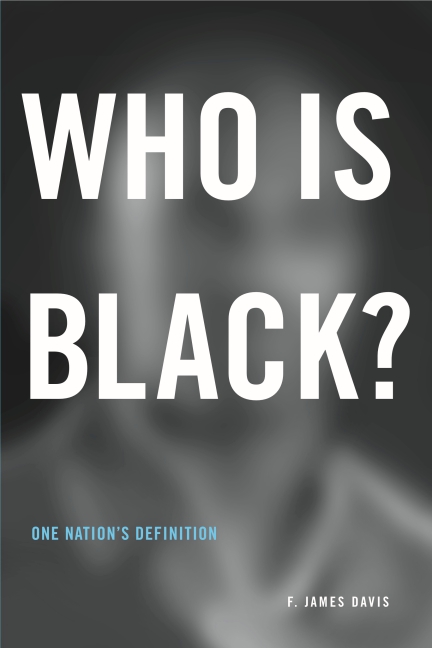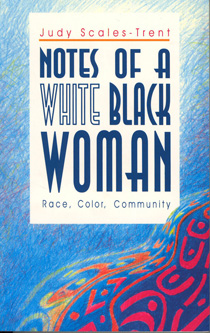Who Is Black? One Nation’s DefinitionPosted in Books, Census/Demographics, History, Media Archive, Monographs, Politics/Public Policy, Social Science, United States on 2009-10-17 21:04Z by Steven |
Who Is Black? One Nation’s Definition
Penn State Press
2001 (Originally published in 1992)
232 pages
6 x 9
ISBN 978-0-271-02172-0
F. James Davis, Professor Emeritus of Sociology
Illinois State University
Winner of the 1992 Outstanding Book on the Subject of Human Rights from the Gustavus Myers Center for the Study of Human Rights in the United States.
Tenth Anniversary Edition
Reprinted many times since its first publication in 1991, Who Is Black? has become a staple in college classrooms throughout the United States, helping students understand this nation’s history of miscegenation and the role that the “one-drop rule” has played in it. In this special anniversary edition, the author brings the story up to date in an epilogue. There he highlights some revealing responses to Who Is Black? and examines recent challenges to the one-drop rule, including the multiracial identity movement and a significant change in the census classification of racial and ethnic groups.
Table of Contents
- PREFACE
- CHAPTER ONE: THE NATION’S RULE
- The One-Drop Rule Defined
- Black Leaders, But Predominantly White
- Plessy, Phipps, and Other Challenges in Courts
- Census Enumeration of Blacks
- Uniqueness of the One-Drop Rule
- CHAPTER TWO: MISCEGENATION AND BELIEFS
- Racial Classification and Miscegenation
- Racist Beliefs About Miscegenation
- The Judge Brady Paradox
- Miscegenation in Africa and Europe
- Race vs. Beliefs About Race
- CHAPTER THREE: CONFLICTING RULES
- Early Miscegenation in the Upper South: The Rule Emerges
- South Carolina and Louisiana: A Different Rule
- Miscegenation on Black Belt Plantations
- Reconstruction and the One-Drop Rule
- The Status of Free Mulattoes, North and South
- The Emergence and Spread of the One-Drop Rule
- CHAPTER FOUR: THE RULE BECOMES FIRM
- Creation of the Jim Crow System
- The One-Drop Rule Under Jim Crow
- Effects of the Black Renaissance of the 1920s
- The Rule and Myrdal’s Rank Order of Discriminations
- Sexual Norms and the Rule: Jim Crow vs. Apartheid
- Effects of The Fall of Jim Crow
- De Facto Segregation and Miscegenation
- Miscegenation Since the 1960s
- Development of the One-Drop Rule in the Twentieth Century
- CHAPTER FIVE: OTHER PLACES, OTHER DEFINITIONS
- Racial Hybrid Status Lower Than Both Parents Groups
- Status Higher Than Either Parent Group
- In-Between Status: South Africa and Others
- Highly Variable Class Status: Latin America
- Two Variants in the Caribbean
- Equality for the Racially Mixed in Hawaii
- Same Status as the Subordinate Group: The One-Drop Rule
- Status of an Assimilating Minority
- Contrasting Socially Constructed Rules
- CHAPTER SIX: BLACK ACCEPTANCE OF THE RULE
- Alex Haley, Lillian Smith, and Others
- Transracial Adoptions and the One-Drop Rule
- Rejecton of the Rule: Garvey, American Indians, and Others
- Black Acceptance: Reasons and Implications
- CHAPTER SEVEN: AMBIGUITIES, STRAINS, CONFLICTS, AND TRAUMAS
- The Death of Walter White’s Father and Other Traumas
- Collective Anxieties About Racial Identity: Some Cases
- Personal Identity: Seven Modes of Adjustment
- Lena Home’s Struggles with Her Racial Identity
- Problems of Administering the One-Drop Rule
- Misperceptions of the Racial Identity of South Asians, Arabs, and Others
- Sampling Errors in Studying American Blacks
- Blockage of Full Assimilation of Blacks
- Costs of the One-Drop Rule
- CHAPTER EIGHT: ISSUES AND PROSPECTS
- A Massive Distortion? A Monstrous Myth?
- Clues for Change in Deviations from the Rule
- Clues for Change in Costs of the Rule
- Possible Direction: Which Alternative?
- Prospects for the Future
- EPILOGUE TO THE TENTH ANNIVERSARY
- EDITION
- WORKS CITED
- INDEX



